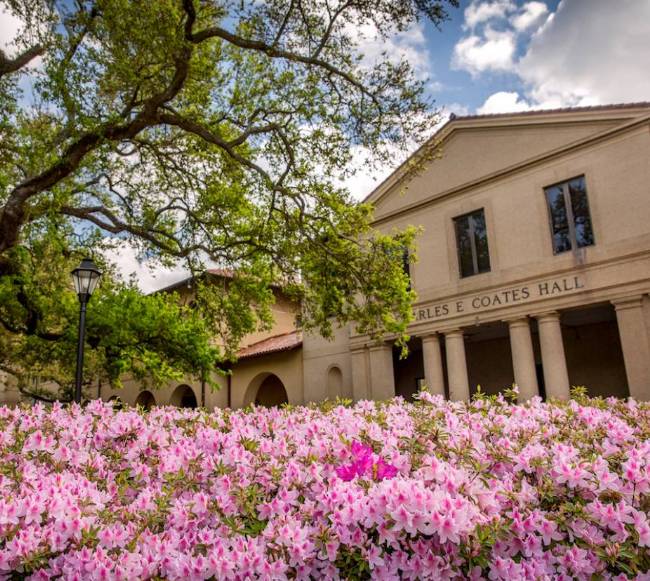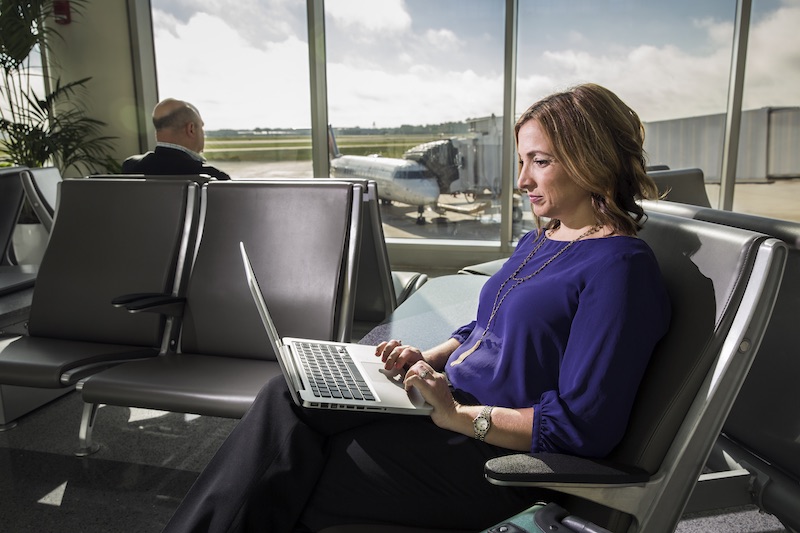How One LSU Student’s Service in the Katrina Aftermath Inspired a Lifelong Career in Medicine
August 15, 2025
In August 2005, Matthew Giglia was an LSU sophomore planning to pursue a medical career but wondering if he was doing so for the right reasons. Then Hurricane Katrina hit New Orleans and the Gulf Coast, and everything changed.
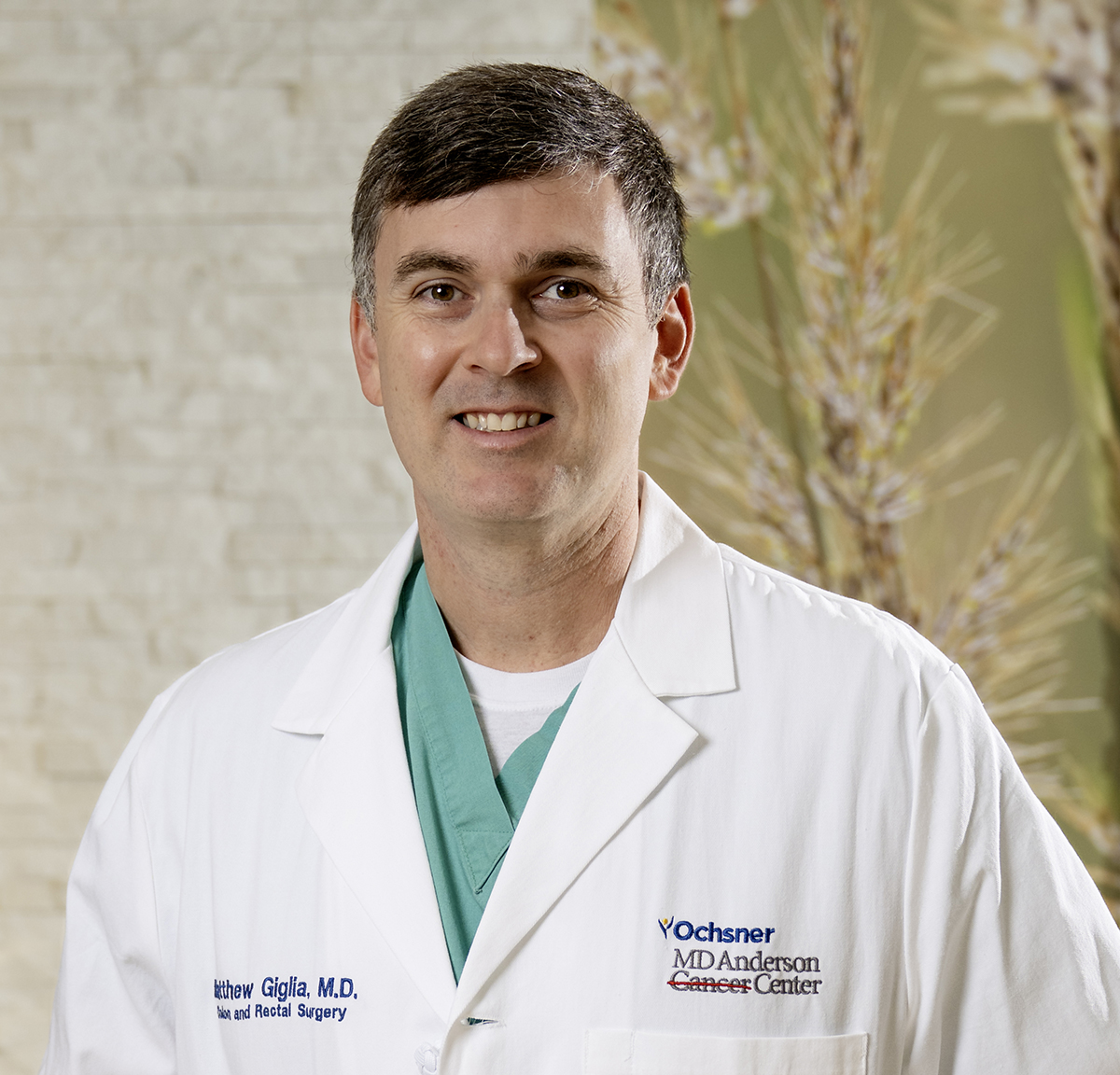
Dr. Matthew Giglia
– Photos by Katherine Seghers
As LSU transformed into the center of medical and emergency response operations for the entire state, Giglia and his fraternity brothers set up a donation center to gather and distribute needed supplies.
But soon another need revealed itself. Medical staff caring for evacuees in the LSU Field House and the Pete Maravich Assembly Center needed help managing the overflow of patients arriving daily on campus, and Giglia and others volunteered. It was a life-changing event, providing clarity and purpose for a young man in search of both.
“Katrina really removed all those doubts for me. Seeing those nurses, seeing those doctors showed me that I wanted to do this for my own path in life.”
Today, Giglia, a graduate of LSU and the LSU School of Medicine in New Orleans, is chief of surgery and a colon and rectal surgeon at Ochsner MD Anderson Cancer Center in Baton Rouge.
— Video by Callie Boyd
We asked Giglia about his time on the LSU campus after Katrina. Some answers have been edited for clarity and brevity.
How did your fraternity come together in Katrina’s aftermath to help supply needed items for evacuees?
After Katrina, a lot of the campus and a lot of the surrounding community wanted to help in some form or fashion, and there was not a central outlet to do that. LSU started getting a lot of requests to set up something. So, some of us took the initiative to set up a donation center. And people just started showing up in droves, donating everything from clothing to baby formula and food to other items. They just wanted to help, to do something.
At what point did you realize your help was needed at the field hospital in the PMAC, and how did you come to volunteer there?
While we were doing the donation center, we noticed all these helicopters being offloaded on campus and people being brought to the PMAC and to the Field House. So we went and inquired, because we weren't that far away from the PMAC at the time.
I had previously worked in a hospital in high school and could take vital signs, and, honestly, they just needed manpower to move patients and help the nurses and the doctors. So that was our main role in the PMAC, just helping out in whatever way we could, whether that was vital signs, whether that was carrying or delivering medication?, or transporting patients or their families.
You’ve said that during that time, you didn’t feel like you were in America. Can you describe what you meant by that?
Growing up in the 20 years preceding that, America was this place where there was always access to healthcare. There was always access to food, water, and shelter. And then, all of a sudden, our state was transformed into an area where almost half the population of the state was either stranded, isolated, or separated from their families.
Medical and military helicopters were landing on our campus and evacuating patients like a war zone. All these supplies were being brought in. We had generators around the clock, so even at midnight, it looked like daylight on campus.
How did you deal with that sense of disorientation or shock at the time?
When you were inside the PMAC, it was easy to focus because you had jobs to do and patients to transport or doctors to help. Once you left and you were going back to wherever you lived at the time, it very much felt disorienting.
When I wasn't working, I remember driving down Highland Road, with no power, trying to find somewhere that was selling food. The Monjunis (Italian Cafe & Grocery) down Highland Road was actually selling meatball subs for five bucks. We bought as many meatball subs as we could, stored them in our refrigerator, and brought them to friends and people who needed them.
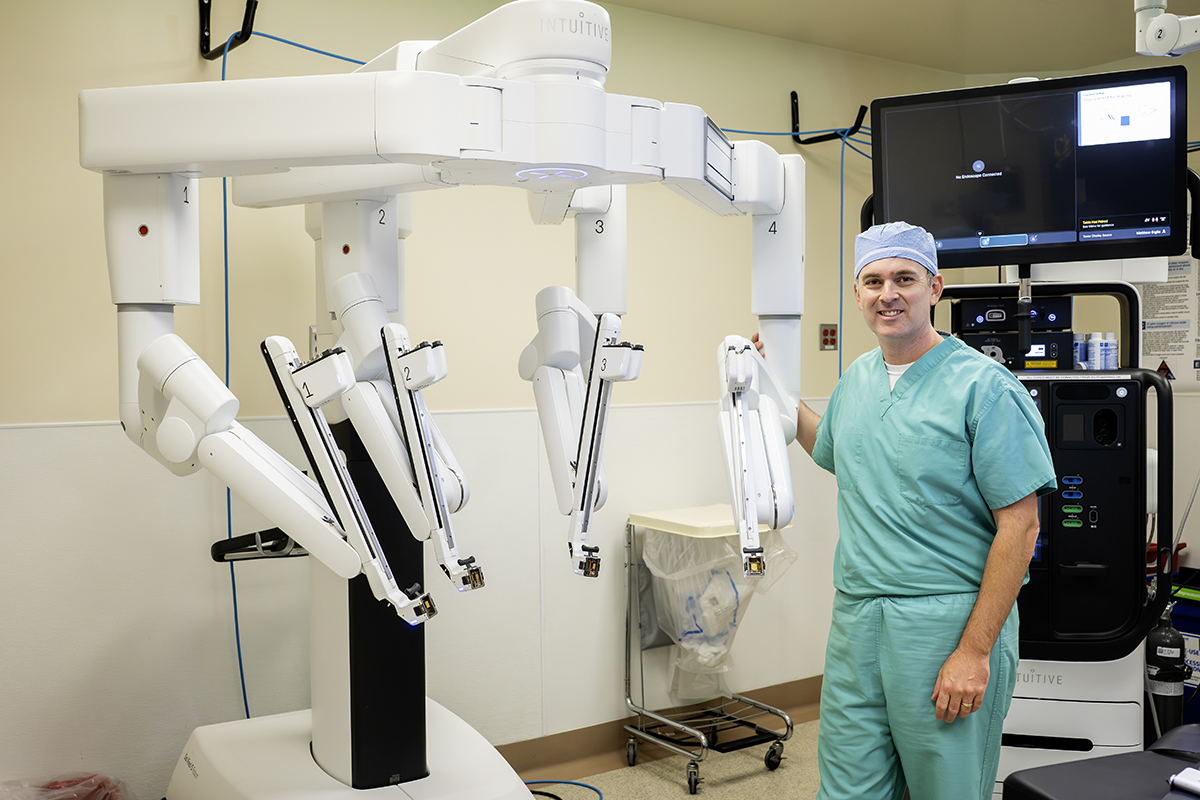
Dr. Matthew Giglia, chief of surgery and a colon and rectal surgeon at Ochsner MD Anderson Cancer Center in Baton Rouge, demonstrates a surgical robot in an operating room at the center.
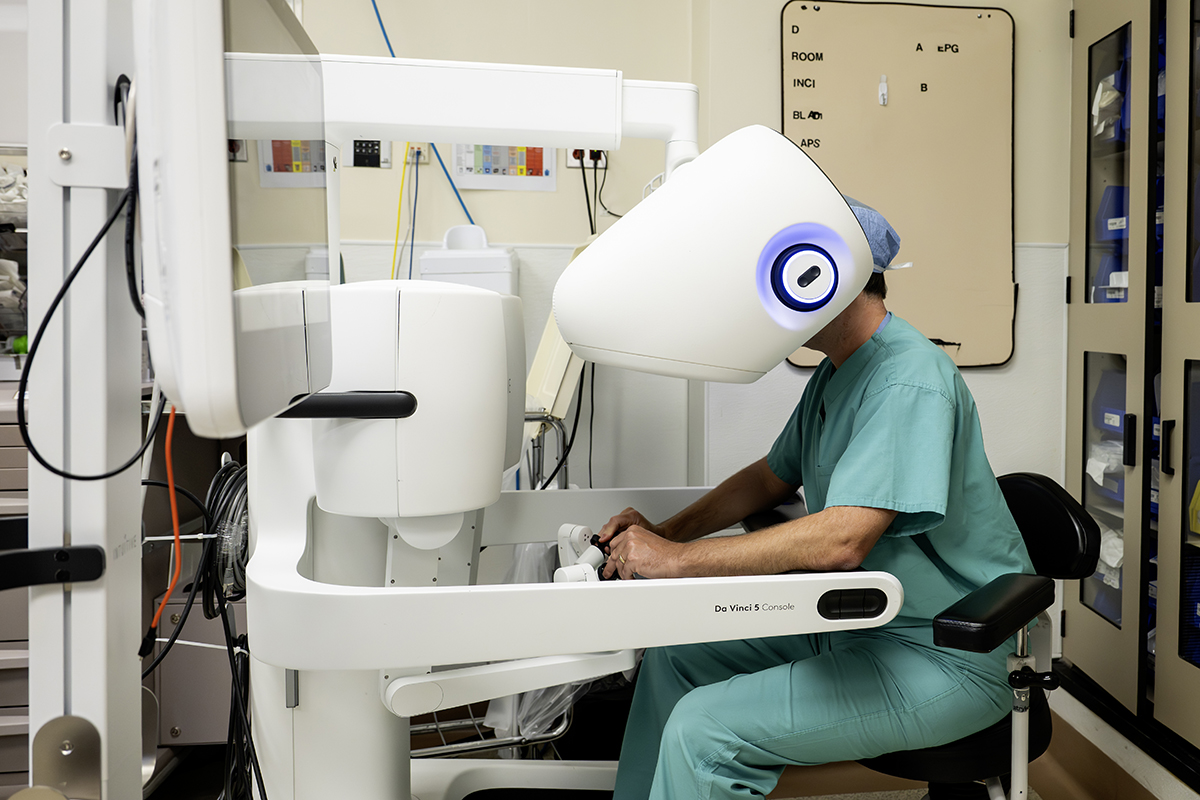
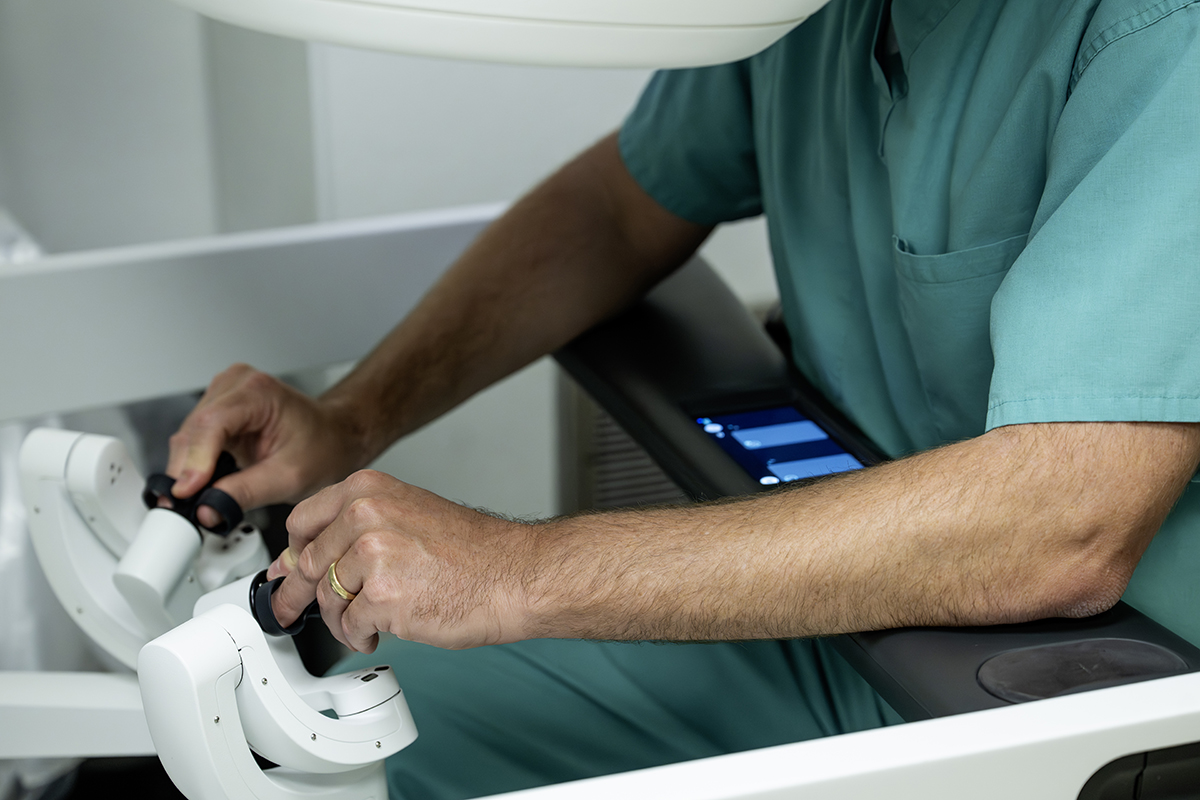
What moments stick with you most from your time volunteering on campus?
There was an ER doctor who was working at the PMAC at the time, and we started triaging a lady. She was there with her kids. Her home had flooded in New Orleans. She and her kids had escaped through the attic and through the roof to get airlifted off the top of their roof. The patient's mom was with them in the house, but it was so distressing to learn that the patient's mother drowned.
And so that family had been evacuated to us at the PMAC because that patient had some significant injuries, including leg injuries. The ER doctor not only treated her injuries, but as she was getting loaded onto an ambulance and being transported to a shelter with her kids, he gave her his cell phone number and said, “Call me if you need anything, and it doesn't have to be medical.”
It just stood out to me that, as doctors, as healthcare workers, we get to affect people's lives at all times. It doesn't have to be medical care. They trust us with their most significant, sensitive stories, and we can affect their outcomes in many different ways. In medical school, they always tell you to treat the patient, not the disease. And that was truly the case of what that ER doctor did that day. It has stuck with me since that time.
Your parents were in the medical field, and your mom and your stepdad were involved in Katrina rescue efforts. How did their example, and your upbringing in a service-oriented family, influence your decision to volunteer during Katrina?

In a photo taken on Aug. 31, 2005, Matthew Giglia staffs a supply station set up by his Sigma Phi Epsilon fraternity brothers on campus to aid Katrina evacuees.
A lot. We were brought up to serve others in every aspect of our lives. Whether that was stepping up in a natural disaster or volunteering at a food bank or a shelter during Christmas or Thanksgiving, they instilled in us the importance of caring for others.
I can tell you personal stories about volunteering at Christmas and Thanksgiving at a women's shelter in Lafayette. We didn't just serve food. We sat down and ate lunch and dinner with the residents. And we learned their stories. And listened to them.
Being brought up in a family that focused on service definitely made you want to step up in these moments where you saw the rest of the state have a massive need. Seeing my mom and my stepdad go to New Orleans was definitely not a surprise, just because I knew that's what they were always called to do. And they would always risk their lives to save other people, just like they were teaching us to do.
Did your time volunteering at the PMAC clarify or change anything for you about your future in medicine? If so, how?
Going into college, I wanted to be pre-med, doing biological sciences. My dad was a physician; my mom was a nurse and a hospital administrator. I'd been around medicine and hospitals my entire life, and that's what I thought I wanted to do. But I was always questioning whether that was something I wanted to do, or if that was what was expected of me, or just a natural path because of my family.
Katrina really removed all those doubts for me. Seeing those nurses, seeing those
doctors, showed me that I wanted to do this for my own path in life. I didn't want
to do this for my family. I didn't want to do this for anybody else other than, basically,
the right reasons. And so, when you go into the medical field, you need to do it for
the right reasons.
Katrina showed me what those right reasons should be.
How did what you saw during Katrina shape the kind of doctor you’ve become? Are there moments from 2005 that still inform how you approach patients today?
Katrina showed me that you have to approach patients in a patient-centric way. You don't look at them as their cancer, as their high blood pressure, as their cardiac disease. You look at them as a whole person. They happen to bring medical problems to the table, but you have to treat the patient themselves.
Katrina showed me that not only are you dealing with the disease part of what they're presenting you with, but you're also dealing with the human? side, which is arguably the more important side of what we do.
You’ve said you were just one of many who stepped up. What did it mean to you to see LSU students, faculty, and staff respond the way they did?
It was encouraging and heartwarming. Obviously, we hope to never see a disaster of the scope of Katrina again, but seeing the entire community come together to volunteer their time, donations, and efforts, whatever it was, it was great to see people of our state, regardless of background, come together and support each other to actually get through that disaster.
I was only a sophomore at the time, but it made me know that I had gone to the right university. LSU stood up for the state, stood up for its citizens.
Looking back now, 20 years later, what does that chapter of your life mean to you—both personally and professionally?
Going through Katrina now and looking back 20 years later, it definitely shaped personally and professionally on how I approach not only medicine, but life. It is something that even in the worst moments, you find the best in people.
Looking back on it now, no one wanted to have gone through that at the time, but it showed us the best in our state, not the worst.
Explore LSU’s role in response, recovery, resilience, and research following Hurricane
Katrina.Turning Tragedy into Impact
